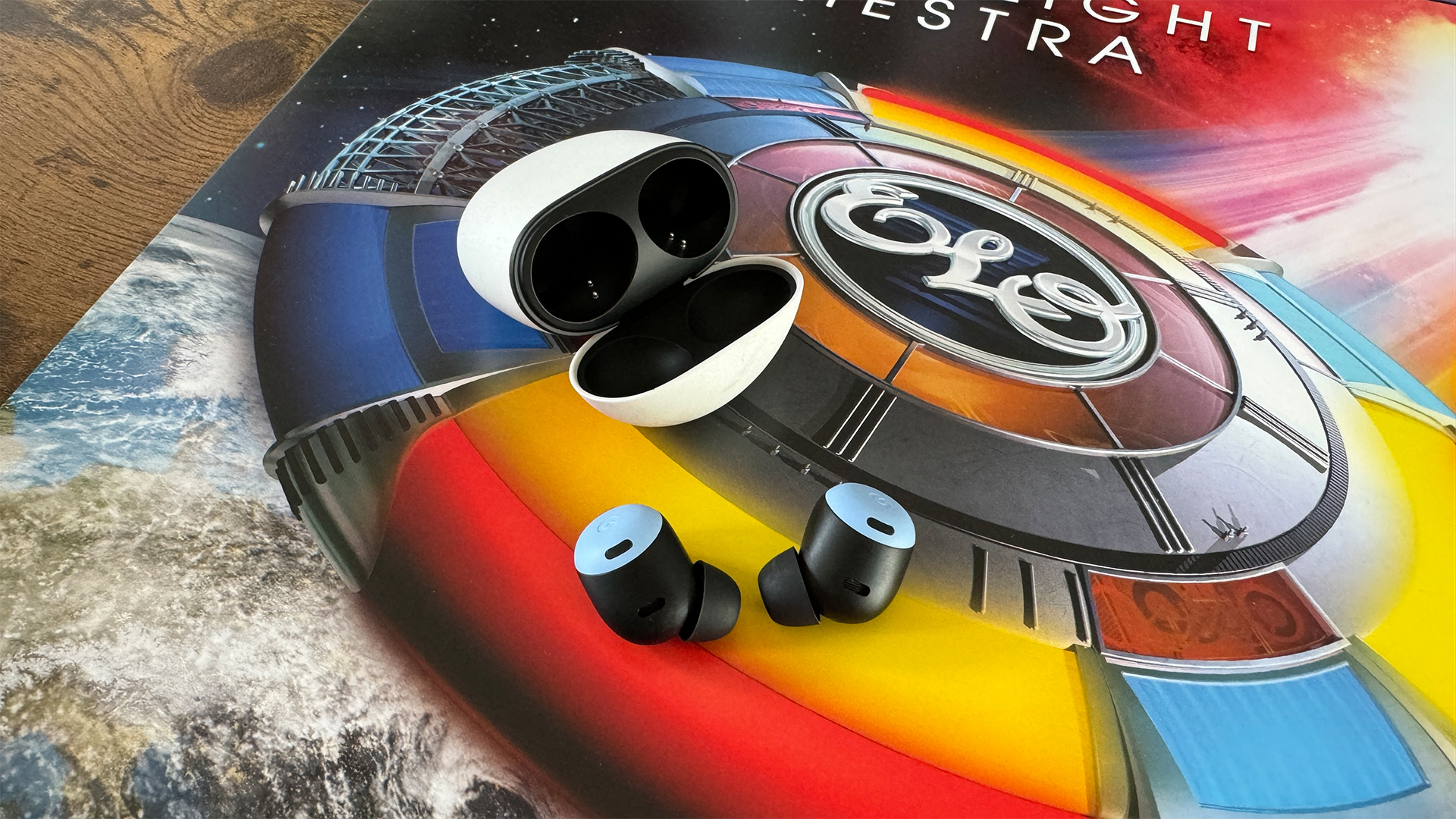What Hi-Fi? Verdict
The Google Pixel Buds Pro offer some great features, but they don’t sound half as good as they should
Pros
- +
Good noise cancellation
- +
Great battery life
- +
Nice integration with Pixel phones
Cons
- -
Poor fit
- -
Sound struggles to compete across the board
- -
No support for advanced Bluetooth codecs
Why you can trust What Hi-Fi?
Having headphones that become an extension of your phone has arguably been half of the success of Apple’s AirPods, with proper integration from the operating system up, proving to make all the difference.
Google has tried a few times to do something similar, to varying levels of success, but the Google Pixel Buds Pro are the company’s first take on the noise-cancelling wireless earbuds market – the Android answer to the AirPods Pro, if you will.
They have a particular affinity for the phones that bear the same name, thanks to several features that make them all the more appealing for Pixel phone owners. But do they sound any good? And how is that noise-cancelling performance? Let’s find out.
Price

The Pixel Buds Pro launched at £189 / $199 / AU$299, but have come down in price a fair bit since then. You could pick them up for £149 / $139 / AU$179 at the time of writing, which puts them up against the likes of the Cambridge Audio Melomania M100, and smack bang in the middle of the Sony WF-1000XM5 at £259 / $299 / $AU419 and their budget siblings, the Sony WF-C700N at £100 / $120 / AU$200.
While it’s unlikely that anyone looking at the AirPods Pro 2 would consider the Google Pixel Buds Pro, and vice versa, it still feels like a fair comparison to note. The AirPods Pro 2 sell for £229 / $249 / AU$399, but we often see AirPods deals to take them to under £200 in the UK.
Design
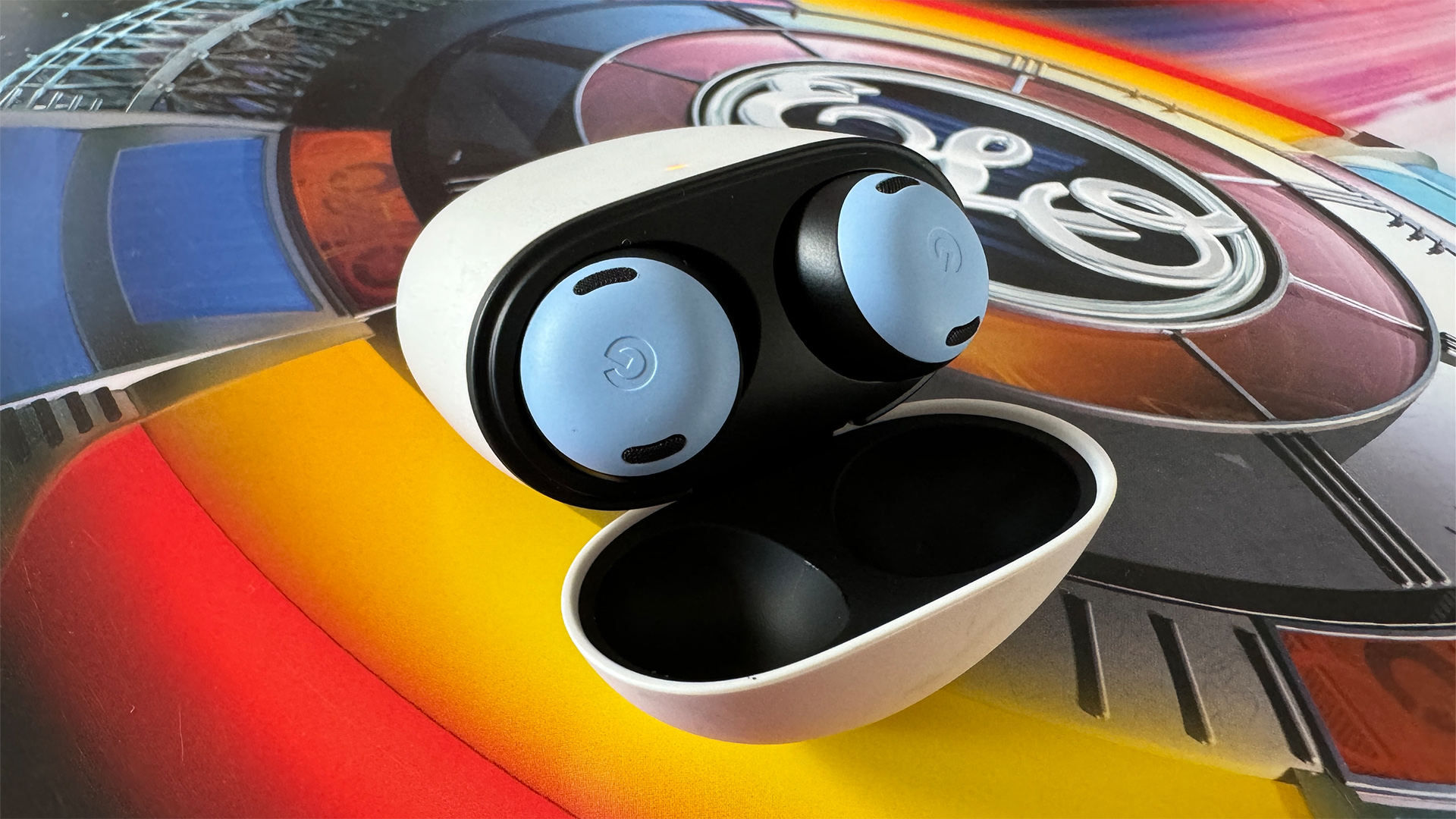
While we can understand Google wanting to stay firmly away from the design that the AirPods made famous, the design it has come up with for the Pixel Buds Pro is a little odd.
A bit like their curved pebble-like case, the buds are a smooth, hard squoval shape with an earbud tapering off to an angle and a coloured circle up top. This is the part that faces out of your ears and doubles as a touch-control pad – it works brilliantly with taps for playback and swipes for volume, and comes in a choice of six colours: Bay (a powder blue colour), Porcelain, Coral, Charcoal, Fog and Lemongrass.
However, the fit is a bit of a struggle to get right. From the get-go, they don’t look particularly comfy, and you will notice them in your ears during longer listening sessions. However, the bigger problem is they don’t sit quite right – we tried them with a few different people and everyone reported the same. They likely won't stay put very well through a workout or run, despite their IPX4 rating making it possible, so they’re probably best for commuting and office environments.
You do get a choice of three eartips in the box, and an eartip fit test in the Pixel Buds app – but we got the thumbs up on all tips, even those that didn’t feel right at all. So that didn't seem very convincing.
The case charges wirelessly or via USB-C and you’ll get seven hours of ANC-powered listening from a single charge (11 without), and 20 in total including the case (31 hours without ANC). There are two fast-charging options, with five minutes charge adding one hour, and 15 minutes adding three (and that's with ANC switched on).
Features
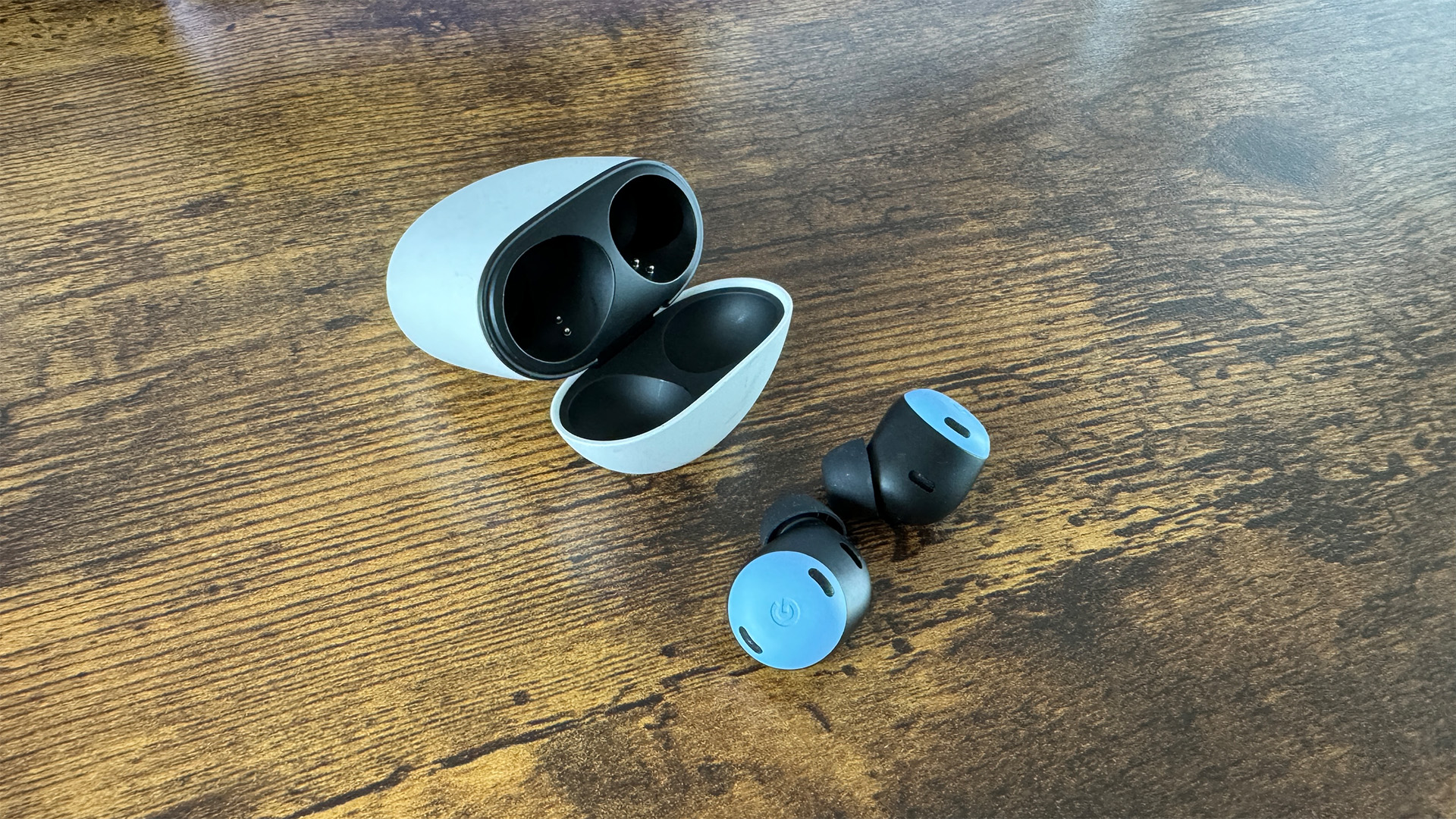
So we aren’t thrilled with the design, but features-wise, the Google Pixel Buds Pro deliver plenty – particularly for Pixel owners, who get spatial audio with head tracking and all controls built into the operating system.
Android users can get access to most of the same features (except spatial audio) via an app, but – just in case any were considering it – iPhone users shouldn’t buy these. There’s no app for iOS, so you won’t get any firmware updates and you can’t play around with any settings either, including switching things on that default as off – like Conversation Detection. You can’t even get a normal listening mode without ANC, as you can only toggle between ANC on and transparency.

Bluetooth version 5.0
Finishes 6
Battery life Up to 31 hours (from buds and case)
Dimensions (hwd) 24 x 22 x 22mm (buds) 63 x 50 x 25mm (case)
Weight 6.2g (each)
For Android users though, the app is well featured and includes things like a Find My Device function that can send a sound to a lost earbud, an option for Adaptive Sound, a five-band equaliser, low-latency mode for gamers, a hearing wellness functionality and Bluetooth Multipoint controls (also switched off by default).
There’s also access to your Google Assistant preferences, which you can use hands-free when connected to an Android phone. You can even translate a conversation between languages in real-time when used in conjunction with Google Translate.
As mentioned previously, the Pixel Buds Pro feature active noise cancellation and they put in a decent showing considering the fit doesn’t feel all that isolating. We did a direct comparison to the noise cancellation on the AirPods Pro 2 and felt that the Apple buds had the edge when it came to blocking out noises above the low-end rumbles, but the Pixel Buds Pro performance was perfectly acceptable once music was playing.
However, despite Google’s claims that there is now double the bandwidth for clearer calls, we think that call quality needs work – particularly in windy conditions. While taking calls at home, our friends say that they can hear us well, but when we step outside, things get a bit more patchy. When the wind picks up, our words can be clipped to an extent that callers report it is occasionally difficult to understand us, which is far from ideal.
Sound
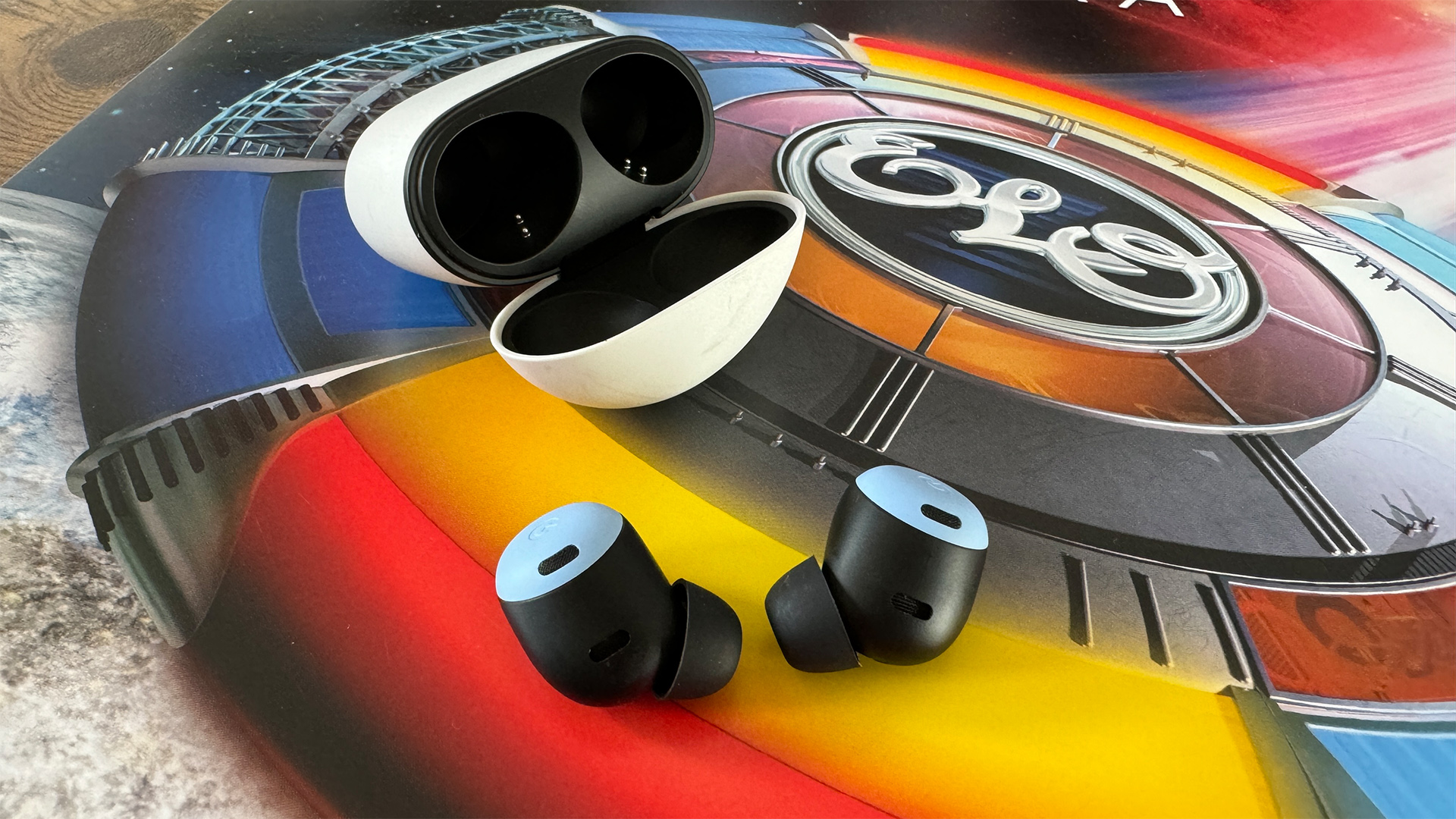
We liked Google’s take on the cheaper end of the true wireless market, with the Google Pixel Buds A-Series, but what we hear here doesn’t leave us feeling quite so positive.
There’s no doubt that they’re upfront and energetic, there’s plenty of pace behind them and there’s passable detail. They won’t shower you with nuance and subtlety but for the price, what’s there is acceptable.
However, when it comes to balance, there are issues at both ends of the frequency range. Listeners who enjoy their bass boosted will find the first issue, perhaps, not an issue at all, but there is undoubtedly some bass bloat here.
Listen to Del Fuego by Fat Freddy’s Drop and the pulsing low end really pulls the spotlight onto itself and away from the vocals and brass, making the whole presentation overly warm, certainly for more neutral tastes.
However, what’s more of a distraction here is the treble, which is unrefined and just catches your ear when listening – from finger snaps to the sibilance on “s” sounds. It doesn’t cross over into what we’d say is harsh, but it sits just on that edge, and certainly doesn’t make for a comfortable listen – we end up skipping Tame Impala’s Let It Happen part way through as it just sounded too much.
Compared to the AirPods Pro 2, they sound far less expansive too, and when there’s a lot going on in the mix, things can sound a little squashed. This isn’t helped by a midrange that struggles to hold its own against the two boosted frequencies either side of it, which means it can come across quite flat and thin. While the low-end is big and showy, the midrange doesn’t adopt the same amount of body and confidence, which is why it loses out when a piece of music throws in a sizeable bassline.
You don’t even get great dynamics here. There’s a sense of light and shade in the Dance Of The Knights by Sergei Prokofiev, but it isn’t as explicit as you’ll hear it portrayed through the AirPods Pro 2, and the build to the big finale rolls in and away with very little fanfare at all.
While it wouldn’t solve these issues completely, it’s a shame the Pixel Buds Pro don’t support advanced Bluetooth codecs like aptX HD, when Android phones do. We can’t help but wonder, too, if a bit of that treble could be tamed with a better-quality Bluetooth connection.
Verdict
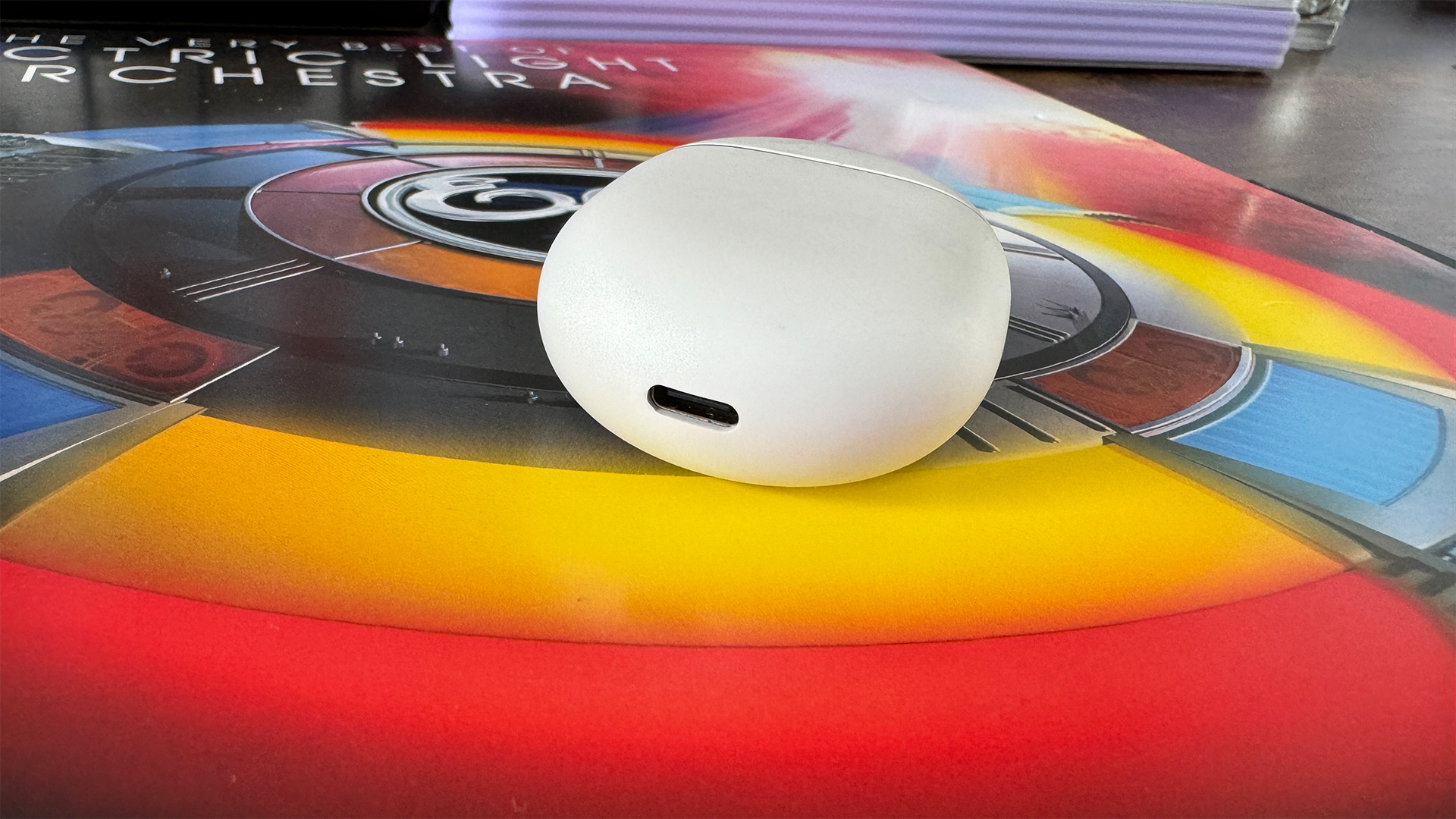
The Pixel Buds Pro are a disappointing entrance for Google into what is a very competitive marketplace. While their price is appealing and their features are plenty (for Android users at least), their sound is hard to enjoy – particularly for anyone who prefers a more neutral listen. If you’re happy to forego some of the features, you can find better-sounding headphones for less.
SCORES
- Sound 3
- Features 5
- Build 3
MORE:
Read our review of the Cambridge Audio Melomania M100
Also consider the Sony WF-C700
Read our Apple AirPods Pro 2 review
Best wireless earbuds: top pairs tested by our experts
And the best cheap wireless earbuds
What Hi-Fi?, founded in 1976, is the world's leading independent guide to buying and owning hi-fi and home entertainment products. Our comprehensive tests help you buy the very best for your money, with our advice sections giving you step-by-step information on how to get even more from your music and movies. Everything is tested by our dedicated team of in-house reviewers in our custom-built test rooms in London, Reading and Bath. Our coveted five-star rating and Awards are recognised all over the world as the ultimate seal of approval, so you can buy with absolute confidence.
